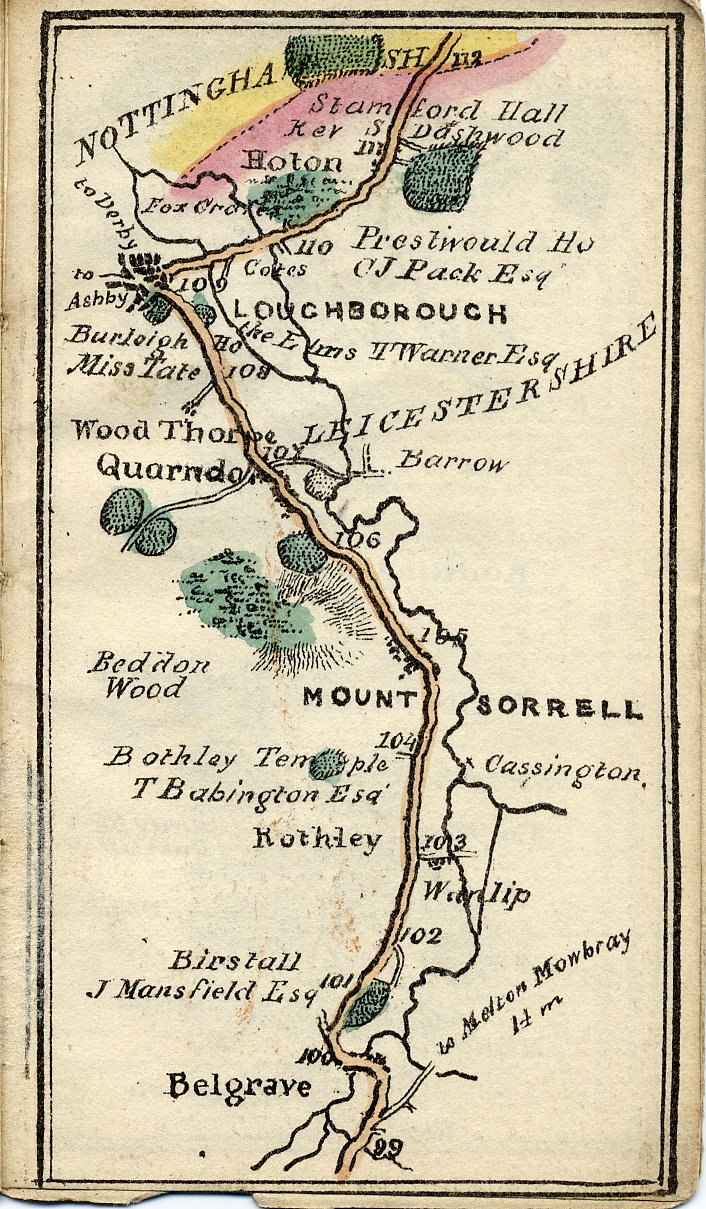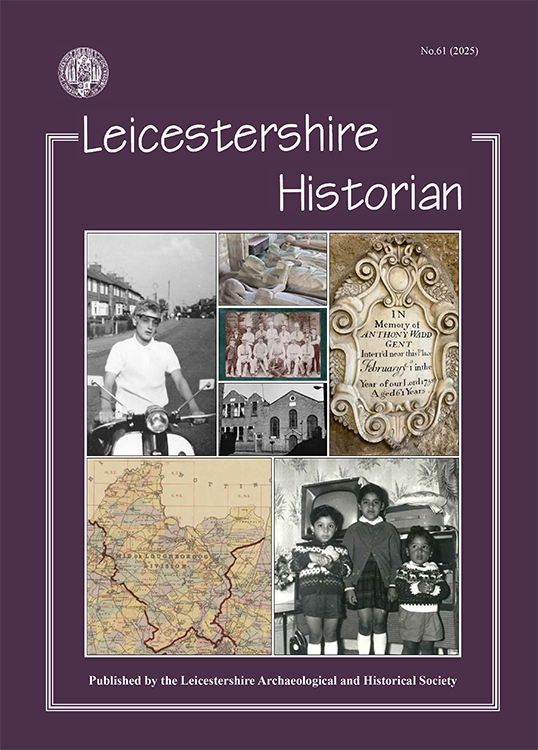Leicestershire Historian
The Leicestershire Historian first appeared as the annual publication of the Leicestershire Local History Council in 1967, but when that body ceased to exist in 1995, the Leicestershire Archaeological and Historical Society took over its publication.
Early editions of the LH were quite modest running to around 28 pages, occasionally reaching 40. By 1977 52 pages was the norm and remained so until 1991 when the Jubilee edition was published which contained 64 pages. The next major change was to move from A5 to an A4 size which first appeared in 1998.
Most editions of the LH contain a review of recently published books on Leicestershire.
The Society does not have the resources to copy articles for researchers, but a paid-for service does exist via the Record Office for Leicestershire, Leicester and Rutland (ROLLR) details of which can be found via their website.
If there are any objections to the use of images by copyright holders, please contact secretary@lahs.org.uk who will arrange to have them removed.
Selected back issues are available for £10 including p&p. Contact the Society's library on library@lahs.org.uk
Members of the Society can download the Leicestershire Historian below.
Past volumes are freely available from the Archaeology Data Service (ADS)
Leicestershire Historian Volume 61 (2025)
Editor: Elizabeth Tingle
Editor: Elizabeth Tingle
Complete volume
Contents & editorial
Dave Fogg Postles
The Making of a Manor: Willoughbys in Wymeswold
In the later Middle Ages, new manors were formed concurrent with demographic change and the activity of the land market. Some of these new lordships partially resulted from assarting. In the east Midlands, however, the creation was a consequence of the consolidation of disparate pieces of land with tenants producing new tenant obligations. The making of a small manor in Wymeswold by the Willoughbys belonged to this category.
Lynn Marriott
Exacting Revenge from Beyond the Grave: The Tale of Anthony Wadd – Eighteenth-Century Gentleman and Lawyer
This article explores how Anthony Wadd, memorialised in Melton Mowbray’s St Mary’s Church, consolidated his middling class status in life and death and how he was able to continue to manipulate and control his assets for years after his death.
David Howells
John Ryder, Veteran of the Anglo-Sikh Wars, 1825-1910
John Ryder is thought to have been born c.1825 at Twyford, Leicestershire. In the 1850s, Ryder served as a Constable in the Leicestershire Police. While stationed at Groby, five miles from Leicester, he wrote an account of his former military service: ‘Four Years Service in India’, in which he comments on aspects of the Victorian Army at home and on life in India during peace and war.
Cynthia Brown
‘More than a nine-days’ wonder’ – the Leicester Secular Society ‘Cricket Wars’ of 1885
One small but not insignificant part of a wider campaign to challenge restrictions on Sunday activities arose in the summer of 1885, when the Leicester Secular Society Cricket Team tested – in the face of much opposition – the legality of playing cricket on Sundays.
Luke Danes
‘“Who is Mr. Tooth?”’: the de Lisles in exile, Garendon Park and an Australian millionaire, 1894–1907
While the name of de Lisle is indelibly linked with Garendon Park near Loughborough, serious debt incurred during the mid-nineteenth-century forced a later generation into ‘Comparative retirement in a bid to recover costs and secure the estate’s future as their ancestral seat.’ During a prolonged period of self-imposed exile, Robert Lucas-Tooth leased Garendon Park for a number of years and made himself and his family at home in Garendon Hall. But who exactly was Robert Lucas-Tooth, what brought him to Garendon Park and what impression did he leave on the local community?
Peter Ackers
The Churches of Christ in Boot and Shoe Leicester
The little-known Churches of Christ were particularly strong in Leicester during the early decades of the twentieth century and did much to shape its economy and community. They were ‘new primitives’ of the late Victorian era, in step with the industrial transition to large scale factory production in the Boot and Shoe industry, which fostered the rise of a distinctive local labour movement
Vince Holyoak
All American – Prejudice and Conflict in Leicester 1943-44
Following the entry of the United States into WWII, US servicemen became an increasingly common sight in Leicestershire. The first American base in the county opened in 1942 across two sites near Melton Mowbray. These sites were primarily home to Engineer Aviation and Quartermaster Truck units, whose presence is particularly important for understanding the events which occurred in Leicester as they were (in the official American parlance of the time) ‘colored’ or ‘negro’. This distinction was considered a necessity because of the US Army’s strict policy of racial segregation.
Shaun Knapp
Gone But Not Forgotten: The Lost Venues of 1960s Leicester
During the 1960s, Leicester had an abundance of live music venues which varied in size and capacity, from De Montfort Hall, Il Rondo, the Nite Owl, the Palais and the Casino, to the Burlesque, the Latin Quarter and the 5th Dimension. Here is a snapshot of some of those venues and the incredible stories associated with them
Meghna Popat
Stories that should be told – the UK South Asian Digital Archive
History is not just found in museums or textbooks. It lives in the stories our parents and grandparents tell, in old photographs, the memories of places left behind, and in the lives rebuilt in new countries. For many South Asians in Britain, these personal histories are woven into our identity. Yet too often, they remain untold, hidden beneath the surface of everyday life, mentioned only in passing at family gatherings, or remembered in private moments of reflection. This article tells the story of my family and their journey.
Robert F. Hartley
Spotlight on a Subject for Fieldwork - Historic Shaft Coalmines in the Leicestershire Landscape
In the process of surveying and publishing some 500 earthwork sites in Leicestershire I have become aware of the potential to identify many aspects of past land use surviving as earthwork features. I began by looking at deserted Medieval villages and manorial sites, but also increasingly found post-Medieval gardens and parkland. In the process of evaluating sites in the area planned for destruction by the ‘Lounge’ opencast coal mine in the 1980s I also began to identify earthwork and soil mark evidence for clusters of mine shafts, some of which were subsequently dated to the fifteenth and sixteenth centuries.
Cynthia Brown (ed)
Recent Publications
Leicestershire Historian Volume 60 (2024) Diamond Jubilee is also available
Background image: Stagecoach map
Stagecoach map



